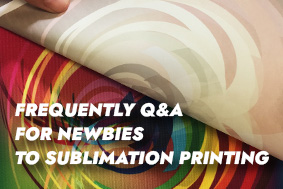Even though DTF film is already hot enough in the heat transfer market, we believe that there are still some precautions that people don’t pay attention to daily, so we are here to tell you what you need to pay attention to when using DTF film.
REQUIREMENTS:
For DTF printing, a trick printer is required, with a piezoelectric head and 6 channels, DTF flexible inks, transfer film, adhesive or polyamide powder, a RIP that allows us to manage printing and ink coverage, especially white ink and a press. , oven or flash pre-drying for curing and press for transfer. And Subtextile can provide you with the whole solution.
PROCESS:

Print
The printing sequence is as follows: first, we print the 4 basic CMYK colors on the film with the help of a RIP, and then the white layer is printed on them. With the help of the RIP, we control the coverage of white ink and its bleeding (spread) with respect to the color layer, among other parameters,
Adhesive
After printing on PET film, a non-absorbent substrate, the ink remains wet on its surface for between 5 and 10 minutes, during which time it is important to apply the adhesive powder before the ink dries.
Once the film is covered with the adhesive powder, we shake it to eliminate the excess that we will put back in its original container.
Then you have to remove the remains of dust that may have adhered to the non-printed areas of the DTF film. If we do not do this, specks will appear in the textile printing, for this, we recommend using an air gun or similar, which will cause the dust particles that are not adhered to the ink to be repelled by the pressurized air.
Cured
After adhering the powder to the fresh ink, we must proceed to cure the polymer by heat. We can use a press that has the option of curing, that is, it has a height between plates of 3 or more centimeters to apply heat without touching the film. A pre-drying oven or flash can also be used. The important thing is to apply heat evenly without actually burning the film.
The approximate times and temperatures for curing are:
For immediate stamping: 170 degrees for approximately 2 minutes.
To store the film and stamp later: 190 degrees for 8 minutes.
Stamping and peel off: To stamp the DTF transfer on the textile proceed as follows.
On Cotton Garments 170 degrees for 15 seconds, approximately.
On Polyester Garments 140 degrees for 45 seconds, approximately.
After stamping, we remove the film cold (15 seconds later) gently removing it but in a continuous action.
The transfer is made only from the printed area, not needing to make any cut of the print like other transfers or make discards like vinyl. And the best part, it doesn't matter the color of the textile, black, white, colors, polyester, cotton, non-woven, rigid ...
ADVANTAGE
In DTF printing the peeling process is the simplest and fastest that exists, compared to other similar customization methods, it does not require peeling or material discards.
Those customized with DTF offer excellent quality with the great vividness of colors and very pleasant touch and great flexibility, superior to textile vinyl and other techniques since we only transfer the ink to the garment.
They resist more than 50 washes following the appropriate recommendations: wash the garment inside out to avoid any friction inside the washing machine, do not use bleach because they damage the clothes, and wash them only with cold water, never more than 30 degrees
ATTENTIONS
The handicap of DTF printing, head jams caused by sedimentation of inks, especially white ink.
Therefore, The daily print and scrupulously follow the recommendations of head cleaning, test printer and shake the ink are tasks essential.
Subtextile Co. Ltd.
Address:699-18 Xuanwu Avenue, Nanjing City, China, 210000
Tel |Fax:+86 25 85416407 (GLOBAL)
Cell:+86 17798509616
Whatsapp:+86 17798509616
E-mail:[email protected]
 Easy-to-Design Mother's Day Gift Ideas
Easy-to-Design Mother's Day Gift Ideas
 Frequently Q&A for Newbies to Sublimation Printing
Frequently Q&A for Newbies to Sublimation Printing
 Choose sublimation paper? Focus on quality over price
Choose sublimation paper? Focus on quality over price
 7 Factors To Consider Before Choosing A Digital Textile Printer
7 Factors To Consider Before Choosing A Digital Textile Printer